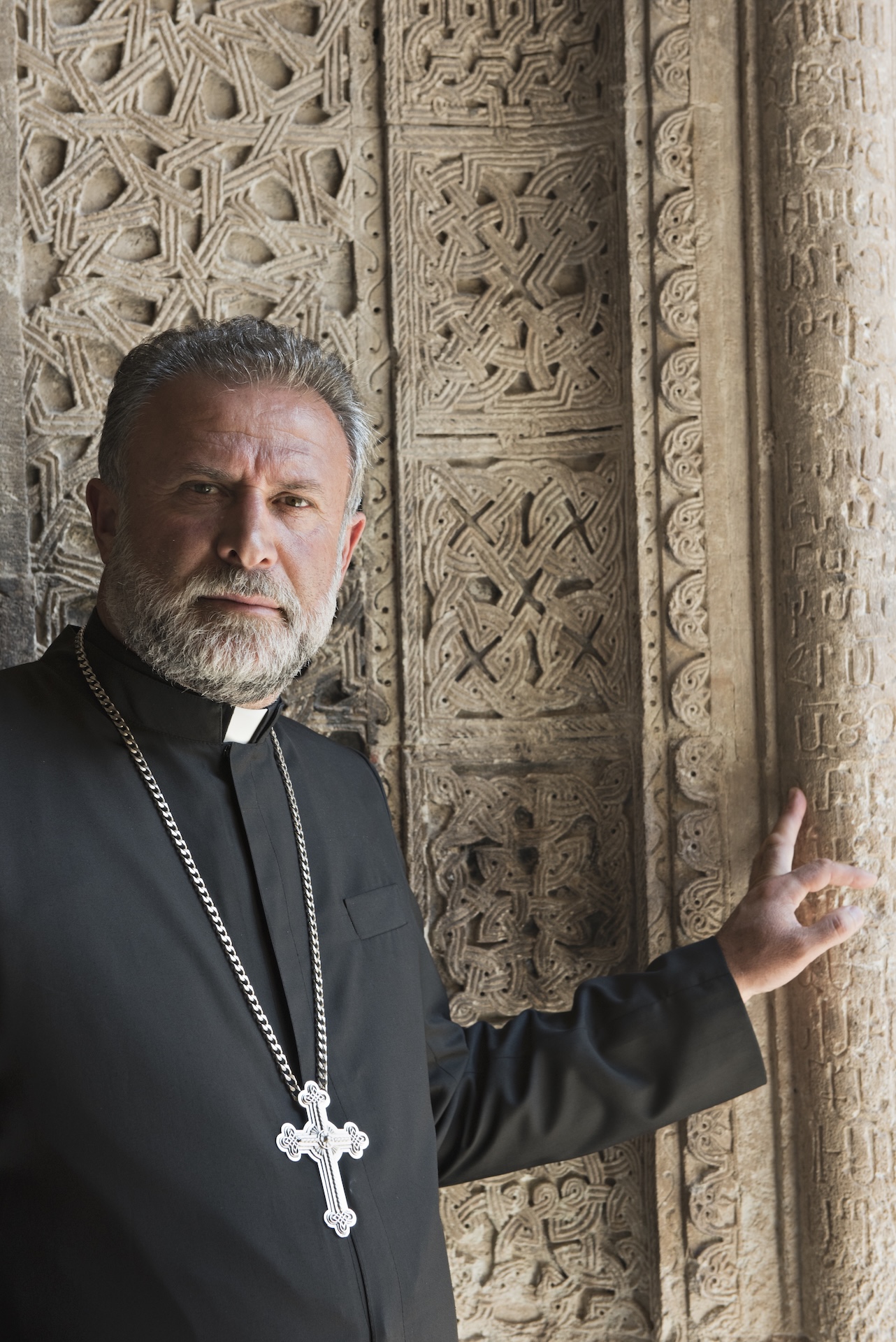
The monastery of Dadivank contains numerous inscriptions in Armenian, like those shown here by this priest, the last to serve at the site before being expelled by Azerbaijani forces at the end of 2020.
The Armenian alphabet was invented by Mesrop Mashtots, a learned monk who lived at the turn of the 4th and 5th centuries. Serving the king, he drew inspiration from the court’s spoken language and sought to adapt an alphabet to it. After a study trip to the leading schools of the Syriac language, spoken in the Near East at the time, he established the script, phonetic rules, and spelling of the Armenian language. To the 36 letters he created, two new characters were added in the Middle Ages.
This invention came relatively late, it was because writing had long been met with suspicion by the population, who viewed it primarily as a tool of taxation or ideology imposed by foreign rulers. However, once the Bible became the first book written in Armenian, it was seen as a gift from God, and this initial distrust turned into a genuine reverence that endures to this day. Every autumn, Armenians celebrate the Feast of the Holy Translators. At Mashtots’ initiative, they translated the writings of the early Church Fathers from Greek and Syriac. Their work proved crucial because, by the time of the monk’s death in 439, the Kingdom of Armenia no longer existed. Only the language and religion survived. From then on, the legacy of the written word became a fundamental element of cohesion for the Armenian people.
Following their example, in every era, educated Armenians have traveled the world to acquire scientific, historical, and other knowledge and translate it, ensuring the vitality of their culture. Even today, many members of the Armenian diaspora have a good command of the language. It remains a cornerstone and a tangible link to their ancestral homeland for a people buffeted by History.